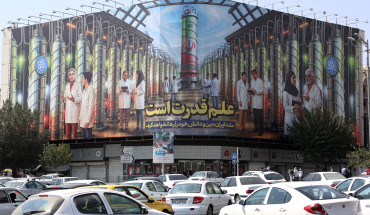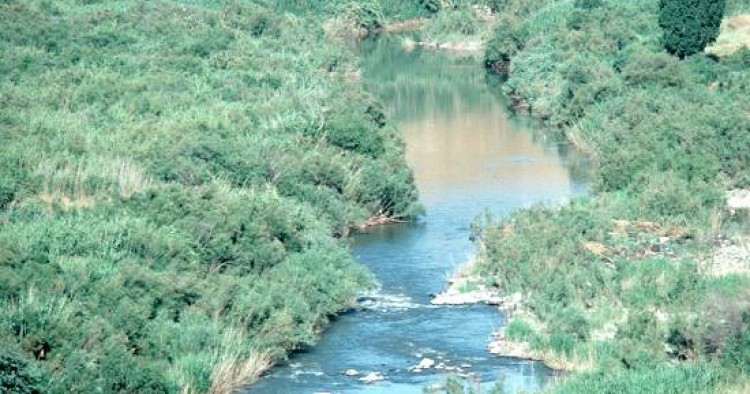We are entering the era of water scarcity throughout the world. Water scarcity is different from mined resources that become scarce when the lode runs out. Water is almost always renewable. The scarcity applies to expansion. For thousands of years, supply has been expanded through engineering. Nowhere is that more obvious than in Egypt, where water demand has been met by increasing supply. Expansion accelerated during the 19th and 20th centuries, but has now ground to a halt as there is no more water to collect, store, and distribute.
The hydraulic mission conducted by engineers is over. The resource is now closed and must be allocated among farmers, industry, and domestic users while enough remains in order to maintain the environment.
Scarcity in Egypt
The age of scarcity requires political and cultural change. Policymakers have been trained and have lived their lives during an age of plenty - not just for water but for all resources. Adjusting to a closed resource is difficult for politicians, administrators, and society as a whole.
In Egypt there is an acceptance of closure within the senior levels of the Ministry of Irrigation and other Ministries connected to water but not within the public political discourse.
The National Water Resource Plan 2017[1] prepared for the Ministry of Irrigation spells out the details of closure. The available Nile water remains stable at 55.5 billion cubic meters and while there are small increases from fossil groundwater sources and recycling the plan goes on to predict a substantial fall in the water available per irrigated hectare. Using a rather simple formula of water = crop = income, it predicts a 20% reduction in farmers’ income as a result of water scarcity by the year 2017. Farmers are already one of the poorest sectors of Egyptian society; such a fall in income will have serious political consequences.
Allocation
The Egyptian water resource is closed or nearly closed to further expansion. Population and land under irrigation are increasing. Water will have to be rationed not just between agriculture and other uses but within agriculture itself.
A water market
The World Bank and other water economists are advocating a water market as a solution to the thorny problem of allocating a closed resource.[2] In Australia, the Murray Darling basin has been converted into a water market. The Australian water market has been operating for over a decade.[3] During first decade of the 21st century, the catchment has suffered from the worst drought recorded and provides a working example of a water market as a means of allocating a scarce resource.
Property Rights
Like all markets, that for water is based solidly on property rights. In Australia, most of the water is metered already. In Egypt, that is not the case. During the Australian drought, when water scarcity was acute, the meters proved to be inadequate. Farmers could, and did, tamper with them. Australia is now investing heavily in more sophisticated meters. For Egypt, the cost of metering water to many millions of small farmers would be extremely high.
Reduction of Salinity
Reduced salinity was put forward as a benefit from the market in Australia. The reasoning was that water could be traded out of and into areas with low salinity but only out of areas with high salinity. The natural turnover of the market would gradually move water away from these saline areas. Salinity is a much greater problem in Australia than in Egypt.
Improved Efficiency of Use
Saleable water rights encourage farmers to use water efficiently through improved irrigation techniques. This process of improvement was taking place in Australia before the water market and in Egypt farmers already have a high level of efficiency (See table above). The water market gives an added incentive to efficiency improvements as surplus water can be sold.
Without a water market, this surplus water is an on-farm reserve but when it is sold to another farmer it is used to expand the area under cultivation. When the Australian drought came, everyone suffered, as allocations had to be reduced well below the amount shown on the title certificate. The on-farm reserves had been sold.
Higher Value Crops
Another claimed advantage of the water market is that it makes the value of water obvious to the farmer and that they will then shift production from low-value crops to high-value crops. The World Bank has already suggested that Egypt produce more high-value crops for export and import cheap cereal grains.[4]
Apparently, there are large gains to be made from high-value crops. In Australia, only 20% of the water produces more than 80% of the value of production. It seems obvious that shifting water to higher value crops would improve farmers’ incomes.
This is a rather water-centric view of farming. High returns to water do not necessarily represent high returns to capital, labor, or other factors of production. Australia is also in the lucky position of not having to consider food security from its irrigated land, as it has a large export surplus of basic food from its dryland farming areas. Egypt has to balance the risks of low-value grain for home consumption against the risks of high-value fresh fruit for export.
While high-value crops are much loved by theoretical economists, farmers tend to be more cynical, as they have seen many high-value crops converted into low-value crops through increased production.
Whatever the theoretical arguments, the acute water scarcity during the Australian drought demonstrated the failure of concept in practice. The high-value crops were not saved. While the executives of the basin authority[5] claim a great success for the water market as more water was traded during the drought and the price increased three times, large areas of high value vines and fruit trees were destroyed. Price alone could not drag enough water out from other low-value uses, and the farmers’ ability to pay for the high-priced water rights was not solely based on a water price/output formula. Experience from other droughts shows that farmers’ survival was mainly related to equity. Farmers with high equity survive. Those with high debts do not. Efficient farming rated very low as an indicator of survival.
The executive of the basin authority did not intervene in the water market to allocate water directly to high-value crops, but politicians in Egypt may not be so willing to give up their power to the market mechanism.
Cost to New Growers
Giving water a monetary value is seen as a great benefit by economic theorists, but again the reality as demonstrated by the Australian example is different. New farmers have to purchase water rights in order to irrigate their land. This is a real capital cost. The cost does not arise immediately, as existing farmers are given their water rights free. However, over the years they retire, and new entrants are burdened with this added cost. In Egypt, with the projected fall in income for farmers by 2017, added costs for water rights would make their position even worse.
There is also the question of fairness. The water of the Nile has been used by farmers for thousands of years. The introduction of water rights would, in effect, give that water to a single generation of farmers who are lucky enough to be water users at the time. They can leave with that bonanza in cash while future generations have to find and service the additional capital needed to pay the first generation their bonanza. The second and further generations can pass the capital cost on when they leave farming, but their profits will be insignificant compared to the lucky first.
Environment Needs at Cost to Taxpayer
The Australian drought demonstrated clearly that the water had been over-allocated to farmers. The amount of water delivered was at times as little as 5% of the amount shown on the title. The environment suffered even more severely, as there was no surplus from irrigation for environmental needs. The Murray River stopped flowing into the sea. The lakes at the river mouth shrunk due to a lack of recharge, as did many lakes along the course of the river. The basin authority has now advised the Australian government to reduce the amount diverted to farming by about 25%. This would provide more water for the environment and greater stability for farmers.
Buying back such a large amount of water from the market will cost the Australian taxpayer billions of dollars. Australia can afford to do so as it has a large and prosperous economy outside irrigated agriculture. The national debt is only 9% of GDP. In Egypt, agriculture is relatively more important, and there is virtually none outside the irrigated sector.
The political solution - democratic devolution to local groups\
The water market provides a neat theoretical model for the allocation of scarce water resources, but the Australian example shows clearly that many of the theoretical benefits are not realized in practice while the costs to the government and future generations are extremely high. Already the Egyptian government has indicated that it is opposed to a market solution to water allocation. An alternative that is under discussion is to allocate water through democratic devolution. This is not a neat theoretical model but a messy political solution. It is a process rather than a model. By definition, the outcome is unclear, as the power is being delegated to the local farmers.
Water could be allocated in bulk to the branch canals that serve some 1,000–2,000 Egyptian farmers, who could then take responsibility for the further allocation within the group. The farmers would develop their own allocation formulas based on cultivated area, type of crop, and soil in order to produce water quotas for individual farmers.
Conclusion
Egypt is in a transitional phase. It is beginning to realize that the water resource is closed. However, the momentum from the old hydraulic mission is carrying expansion forward. The result is less water per hectare and lower incomes for farmers. These could have serious political repercussions.
A water market and a democratic devolution are at extreme policy poles for coping with scarcity. Markets are institutions that concentrate power in the hands of a few wealthy people while democratic devolution spreads power among a wide group of water users. While the Egyptian government is being advised to take the market route for the sake of efficiency, the Australian case study has shown that many of the claimed advantages of the market are in the eye of the economist, not on the ground. The Australian water market has also proved to be extremely costly for taxpayers. Egypt has undertaken an extensive program of land reform that has provided the government with strong support among farmers. A water market would reverse the gains made under land reform and place power over water in the hands of a few financially strong groups.
[1]. “Water for the Future: National Water Resource Plan 2017,” National Water Resources Plan, Ministry of Water Resources and Irrigation, Arab Republic of Egypt, Cairo (2005).
[2]. “Making the Most of Scarcity. Accountability for Better Water Management Results in the Middle East and North Africa,” The World Bank (2007).
[3]. Brian and Lynne Chatterton, “The Australian Water Market Experiment,” Water International, Vol. 26, No. 1 (March 2001), pp. 62–68.
[4]. “Agriculture for Development,” World Development Report 2008, The World Bank (2008).
[5]. Wendy Craik, “Irrigated Agriculture - Managing with Less,” paper to ABARE Outlook 2008, March 4, 2008.
The Middle East Institute (MEI) is an independent, non-partisan, non-for-profit, educational organization. It does not engage in advocacy and its scholars’ opinions are their own. MEI welcomes financial donations, but retains sole editorial control over its work and its publications reflect only the authors’ views. For a listing of MEI donors, please click here.













